#Dissolution of the Monasteries
Explore tagged Tumblr posts
Text

Fountains Abbey, Yorkshire
Thomas Hearne (1744–1817)
Gallery Oldham
Destroyed in the Dissolution of the Monasteries, only the walls left standing.
#english imagination#english culture#albion#england#english landscape#ruins#fountains abbey#yorkshire#dissolution of the monasteries#Thomas Hearne#ruined landscape#gothic#gothic England
3 notes
·
View notes
Text

Evesham's Clergy House survived the Dissolution of the Monasteries
#Evesham#Clergy House#Benedictine#Tudor architecture#UK#half timbered#mediaeval#monastery#Worcestershire#Dissolution of the Monasteries#Henry VIII#English Reformation
53 notes
·
View notes
Text
Research trip to Mount Grace Priory

An old interest in monks has resurfaced. I studied Carthusians once upon a time (their manuscripts, really). The interest flares up now and again. This meant that a visit I'd long put off was back on the cards. Drove down to Northallerton in North Yorkshire on Sunday to see the ruin of Mount Grace Priory.
Mountgrace was founded in 1398 by Thomas de Holand, a nephew of Richard II. Carthusians and their brand of piety was super-fashionable at the time (due to the strictness of their Rule and a general post-Black Death rethink) but having a founder connected to Richard II became a problem. In 1415, it was re-founded by Thomas Beaufort. Mountgrace only lasted until 1539, when the Suppression of the monasteries kicked in.
I was keen to look at the reconstructed monk's cell.
I took lots of photos.
Lots.
Here's a few.
View of the church and bell tower

Entering the monk's cell

Laybrothers cooked the food, were responsible for upkeep and general day-to-day activities under the watch of the Procurator. (Laybrothering was a prestigious position. A few bishops retired to take up the job.) Among lots of other jobs, they would deliver food into hatches like this so the monks wouldn't have to interact.

Straight ahead is the living quarters. The fireplace in this cell is smaller than the one found in the sacrist's cell.

Desk by the windows. Lots of natural light.

A place to rest yourself and your reading materials

A place to rest yourself (the Carthusian schedule is brutal).

If you turn left, there's a nice glazed, private cloister looking out onto the cell garden.

If you turn right at the entrance, a covered walkway leads to the garden, freshwater drinking pipe and latrine (both plumbed in. Monastery plumbing was something else. I've seen the plans for London Charterhouse).

More garden! Small fruit tree and exterior view of the glazed private cloister.

Exterior view of the cell from the garden.

Let's go back inside and go upstairs! (These stairs really are steep. Believe the sign next to the fireplace. You have to come down backwards.)

Upstairs, we find the workshop! Spinning, weaving, copying books, woodwork, lots of useful activity.

Once that bell rings, you've got to go to church. A huge covered cloister once connected all those doorways and led to the church.
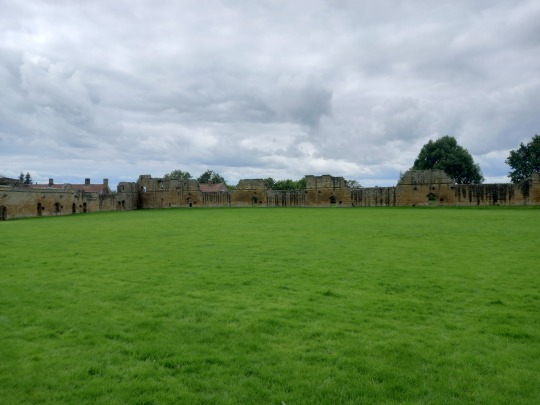
Can't remember if this is the church or chapter house I'm standing in.

Would've been a lovely window here, I bet.
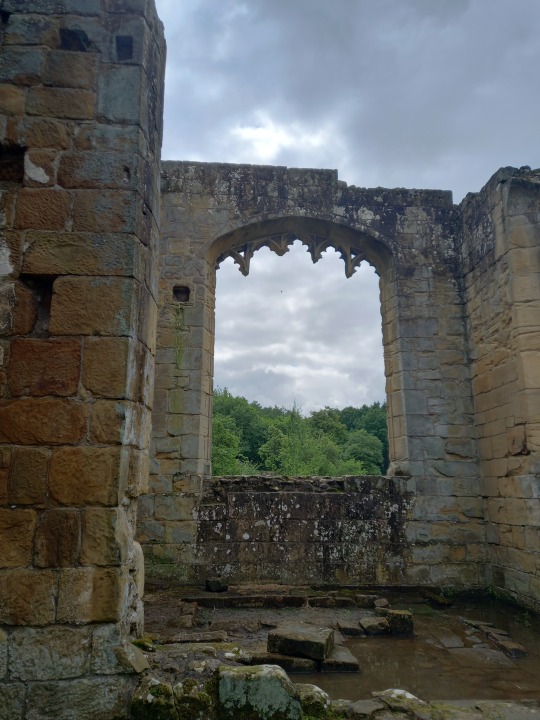
The guest house was in better condition, mainly because Sir Lowthian Bell decided to restore it (and reconstruct the monk's cell). Here it is from the gardens.

There's still some original red plasterwork from the 14th century.

There's a decent museum in the guest house too. If you're into the Arts and Crafts movement, there's some Morris and Co. wallpaper and furniture, plus a couple of restored rooms. I liked this 14th century stone window looking into an Arts and Crafts lounge.

A pretty good day's research! Definitely recommend the place. Absolutely worth the trip.
#research#carthusians#mount grace priory#mountgrace charterhouse#carthusian#14th century#ruins#old ruins#late medieval#monks#arts and crafts#history#reformation#dissolution of the monasteries#charterhouse
6 notes
·
View notes
Text
Traversing History in Tintern Abbey
The Solo Scale: During my time exploring the grounds, I ran into multiple solo travellers, which makes it a perfect place to meander without having to worry about funny looks. In the Wye River Valley, you’ll find the ruins of Tintern Abbey. Picture it — the clouds and the rain have lifted in Wales. You’ve arrived at Tintern Abbey to see the sun shining through the archways and cloisters (if…
#dissolution of the monasteries#things to see in wales#tintern abbey#tintern abbey wales#wales#welsh ruins#wye river valley
0 notes
Text
A VISIT TO THE PRIORY OF ST JOHN THE BAPTIST IN TRIM COUNTY MEATH
https://videos.files.wordpress.com/peYVDEU3/the-priory-of-st-john-the-baptist.mp4
THE DAY AFTER CHRISTMAS 2023 This Christmas I spent three days in Trim County Meath and it rained most of the time. On Wednesday the 27th it was so wet and stormy that it was impossible to take any photographs so I returned to Dublin ahead of schedule. As my Canon 5DIII performs very well in wet weather I decided to bring it with me instead of me rather than my Sony A7RIV or FX30. Another…
View On WordPress
#2023#26 December#5D Mk3#Bishop Simon de Rochfort#canon#Christmas 2023#county meath#Dissolution of the Monasteries#Fotonique#Historic Building#Infomatique#Ireland#Order of the Crutched Friars#priory#Ruins#St Stephen&039;s Day#Trim#William Murphy
1 note
·
View note
Text
An Abbey in Dublin Unearthed
Excavations in Dublin city centre have uncovered the remains of what was once one of Ireland’s most important medieval monasteries. St Mary’s was a House of Benedictines, followed by Savignac monks and then Cistercians, and it was exceedingly wealthy, with the added bonus of being permitted to claim goods from shipwrecks. At times, it was quite a troubled place–the mayor of Dublin, Robert de…
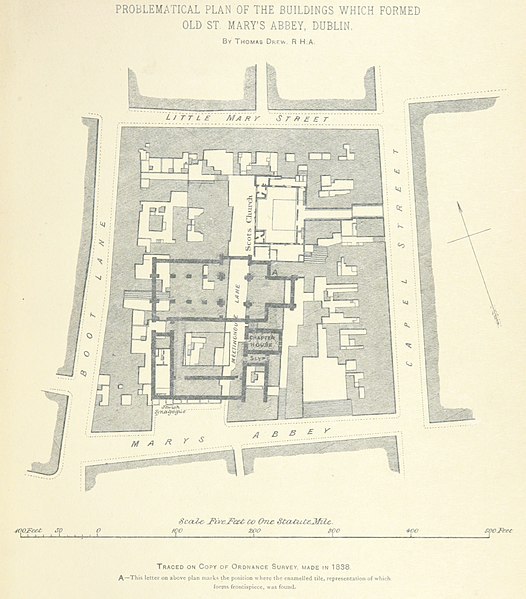
View On WordPress
#Archbishop of Dublin#bigamy#Dissolution of the Monasteries#Dublin#Earls of Ormond#Earls of Ulster#Earls of Wiltshire#Edward Bruce#Edward IV#executions#Henry VIII#Ireland#James Butler#John Earl of Shrewsbury#Lady Eleanor Talbot#Mael Sechnaill mac Maele Ruanaid#pre-contract#Richard Talbot#Robert de Nottingham#St. Mary&039;s Abbey#Towton#Walter Champfleur
0 notes
Text
Founded in 1089, Castle Acre escaped the worst of King Henry's purges. It stands as a model of East Anglian flint-work structures.

Castle Acre Priory is one of the largest and best preserved monastic sites in England.
Many of the buildings are made from mortared flint rubble, a highly durable material that has been prized since the Roman times.
Here, you can also see some beautiful ‘flushwork’ made with flint that has been expertly 'knapped' into shape and set 'flush' with stone to create a charming chequerboard pattern.
Flint knapping is now an endangered craft, but specialists like Lynn Mathias are doing what they can to keep it alive.
If you'd like to try it, as well as other traditional flintworking techniques, join our course this April. Tap the link in our bio to find out more!
#Castle Acre#King's Lynn#Norfolk#East Anglia#mediaeval#monastery#ecclesiastical architecture#English villages#UK#King Henry VIII#flint-working#Dissolution of the monasteries
137 notes
·
View notes
Text
redwall revival is in the air & i just want to say those books are weird. like i enjoyed them too but they're weird. why is the rat named cluny. what's up with that, brian. why did you name your first scary villain creature for a monastic reform movement from the middle ages. did you have some kind of bone to pick with bernard of clairvaux? i'm sure he'd find a bone to pick with you, he was that type. but for real what was with the religious politics in those books. was it just english nationalism? is that the secret sauce???
#i think it was some weirdo protestantism stuff but like in a way where you like the CoE but don't like the dissolution of the monasteries??#incoherent! i mean not that anyone is reading those books for Theology and Good History but what is going on there am i right!!#why wasn't there a duck named cuthbert btw it would've been funny. brian. i would've laughed#redwall#but nobody get mad at me okay i'm glad y'all're having fun with your twee pastoral fantasies + christlike badgers + so on
82 notes
·
View notes
Text
had a strange dream wherein our monastery became one with the earth, little more than rubble left over. our walls decimated and our monks scattered through england, some perhaps moving further. it was as though we simply dissolved.
#a horrid nightmare#tis a good thing it is entirely ridiculous#a dissolution of the monasteries? i think not#monkposting#unreality
27 notes
·
View notes
Text
So I'm currently rewatching The Tudors Season 3 Episode 7 and the downfall of Cromwell is about to happen w/the arrival of Anne of Cleves. I can't decide if I feel sorry for Cromwell or not. It sucks that Henry executed him for such a stupid reason but at the same time he did help take down Anne Boleyn and framed her for adultery.
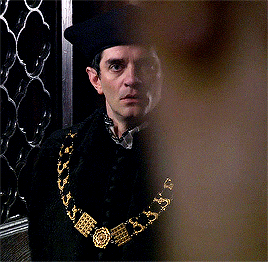
#Rewatching and seeing Anne arguing with Cromwell over the Dissolution of the Monasteries was frustrating.#A big reason why he took her down was because she wanted them to be reformed or re-directed to actually help the poor.#The irony if Henry VIII hadn't been so greedy and had listened to Anne Boleyn instead of Cromwell many people wouldn't have suffered.#The Pilgrimage of Grace would've been avoided if Henry hadn't targeted the monasteries in the way he did.
8 notes
·
View notes
Text
currently "reading" (some i very rarely pick up and/or have been reading forever but i still have the intention of finishing them so i'm including them) :
the new testament and other early christian writings (anthology edited by bart ehrman)
the way of perfection, by st teresa of avila
les misérables (i read it in english in high school but i'm now attempting to read it in french)
alone of all her sex: the myth and the cult of the virgin mary, by marina warner
and i'm listening to the audiobook of the memoir priestdaddy by patricia highsmith.
1 note
·
View note
Text

Lithograph on paper by Charles Joseph Hullmandel after John Skinner Prout.
Tintern Abbey
From Bristol Museums, Galleries and Archives
Charles Joseph Hullmandel (15 June 1789 – 15 November 1850) was born in London, where he maintained a lithographic establishment on Great Marlborough Street from about 1819 until his death.
#english imagination#english culture#albion#england#art#english art#english landscape#gothic#gothic art#tintern abbey#dissolution of the monasteries#medieval
2 notes
·
View notes
Text
Monasteries
#Tudor England#The Reformation#English history#Henry VIII#UK#Dissolution#monasteries#Suzannah Lipscomb#1530's#monastic ruins#16th century#Christendom#HistoryHit
2 notes
·
View notes
Text
✰NEPTUNE IN ARIES✰
A once in a lifetime astrological event!

©️GeminiMoonMadness
✧・゚:*✧・゚:* ✧・゚: *✧・゚:* ✧・゚: *✧・゚:*
Neptune takes roughly 165 years to transit the whole zodiac and has been happily swimming through his own sign of Pisces since 2011. Neptune will transit Aries from 2025 to 2039, spending about 12 and a half years there in total, with a few dips in and out at either end. This represents the start of a new cycle of inspiration and change.
✧・゚:*✧・゚:* ✧・゚: *✧・゚:* ✧・゚: *✧・゚:*
Here are the dates:
-Enters Aries on 30 March 2025
-Retrogrades into Pisces on 22 October 2025
-Re-enters Aries to stay from 26 January 2026
-Dips into Taurus on 21 May 2038
-Final visit to Aries from 21 October 2038
-Enters Taurus to stay on 23 March 2039
✧・゚: *✧・゚:* ✧・゚: *✧・゚:* ✧・゚: *✧・゚:*
Neptune was last in Aries from 1861 to 1875 and brought to light humanity´s impulsiveness translated into wars, the creativity to invent and the determination to discover.
As Neptune transits the signs, it reveals what we idealise and look to for redemption or salvation. In Capricorn (1984-1998) it fed the idealisation of corporations and big business and in Aquarius (1998-2012) it idealised science and technology. In Pisces (2011-2025), it appears to be idealising deception itself because we’re all drowning in fake news and propaganda in a crazy-making post-truth hall of mirrors.
✧・゚: *✧・゚:* ✧・゚: *✧・゚:* ✧・゚: *✧・゚:*
WHAT HAPPENED IN HISTORY THE LAST TIME NEPTUNE WAS IN ARIES?
60 – 73 CE
-In Rome Christianity was spreading fast
-In Palestine there was a Jewish uprising against the Romans in 66 and Josephus wrote his history of the Jewish War which became a major source on Jesus.
388 – 401
-Christianity had become the official imperial religion of the Roman Empire in 391
-Theodosius prohibited all pagan cults and worship.
432 – 419 BCE
-The ancient Greek city states were always having falling outs/battling.
-The Peloponnesian War between Athens and Sparta began and ran for decades.
879-892
-Alfred the Great created a small fleet of ships to fight naval battles against the Vikings.
1206 – 1219
-Genghis Khan began his conquest of Eurasia
-The Christian Crusades were in full swing
1370 – 1383
-The Hundred Years War between England and France was going strong, it started in 1337 and ended in 1453.
-The Catholic Church split in 1378 and there were two rival popes until 1417
-The Church came under attack from 1377 by John Wycliffe, an English theologian.
-John Wycliffe (as above) completed the first translation of the Bible into English in 1382.
-1370s, the story of Robin Hood began to circulate (a tale of a classic Aries character).
1534-1547
-Henry VIII broke from Rome and declared himself supreme head of the Church of England
-This led to the dissolution of the monasteries in 1536 and the destruction of religious relics and churches, and endless fighting between Catholics and Protestants.
-In the 1540s Valerius Cordus wrote Dispensatorium, the first pharmacopeia covering medicinal plants, minerals and how to make drugs, published in 1546. He also discovered ether in 1540, which was used in pain relief for surgery – and for getting as high as a kite!
1697 – 1711
- Lots of fighting and rebellions in Europe over various things, including the War of Spanish Succession in which England took Gibraltar in 1704.
-England was getting tired of fighting the Scots, and in 1707 the Act of Union formed a new entity called Great Britain, unifying England and Scotland.
1861-1874
- American civil war commenced
- germ theory was invented
-Violence on the Australian goldfields
-Slavery
-Abraham Lincoln becomes president
-Franco-Prussian War
(Can you notice a trend?)
✧・゚: *✧・゚:* ✧・゚: *✧・゚:* ✧・゚: *✧・゚:*
PREDICTION FOR 2025-2039:
Neptune in Aries could bring pioneering visions that reach into every part of society, with lots of new ideas and progressive thinking. There could be idealistic revolutions and social activism, visionary rebellions, crusades for truth and religious wars. Wars may be fought based on lies and deception (nothing new there then), or fought with bioweapons, chemicals and viruses.
At best, Neptune could inspire compassionate action and leadership that takes us away from the potential for war. But it could just as easily reveal the corruption and weakness of leaders that create power vacuums and trigger war by accident.
There may also be a massive loss of faith in leadership, a loss of belief in the nation or the system. People could turn away from the system out of disillusionment or even boredom, and lose themselves in escapist pursuits, like gaming or virtual reality.
✧・゚: *✧・゚:* ✧・゚: *✧・゚:* ✧・゚: *✧・゚:*
WHAT HOUSE IS YOUR NEPTUNE IN?
WHAT HOUSE IS YOUR ARIES IN?
WHAT DEGREE IS YOUR NEPTUNE?
✧・゚: *✧・゚:* ✧・゚: *✧・゚:* ✧・゚: *✧・゚:*
#Neptune#astrology advice#astrology#astrology observations#astro community#astrology community#astro posts#astro#astrology readings#astrology posts#astro observations#astro transit#transit astrology#Neptune in Aries#Aries#Neptune transit#Astro readings#history#astrology history#astrology predictions#Aries transit#outer planet#astrology transit#astrology event#astrologist#astrology aspects#astrologer#astrology page#Aries history
193 notes
·
View notes
Text
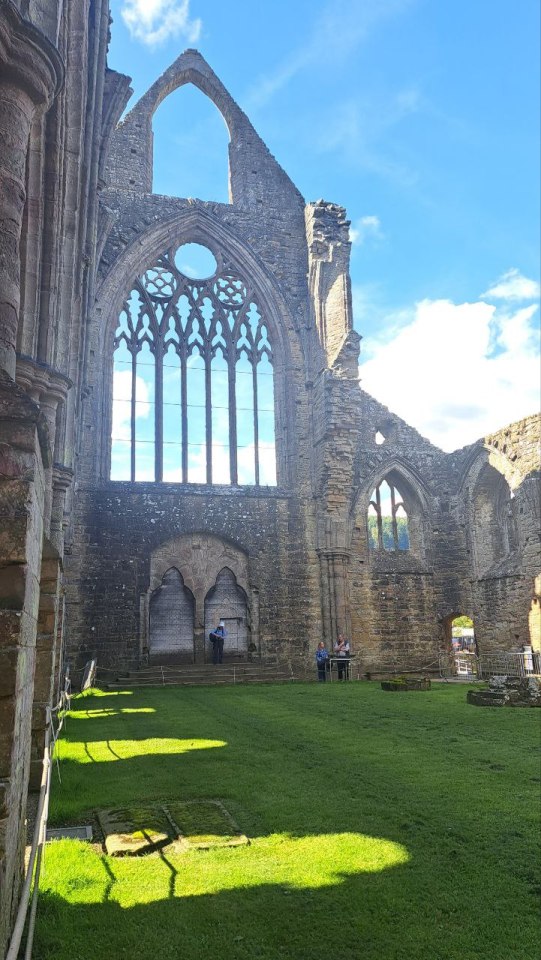
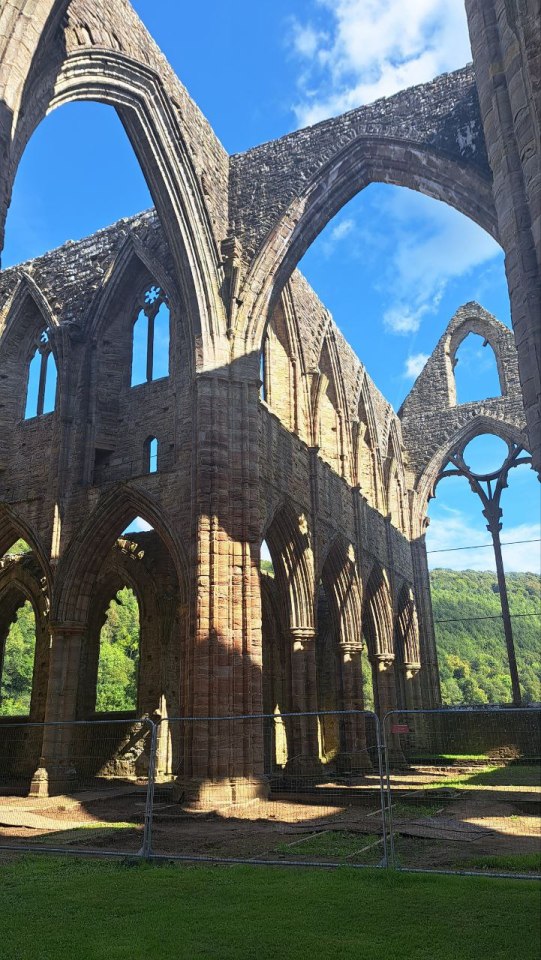
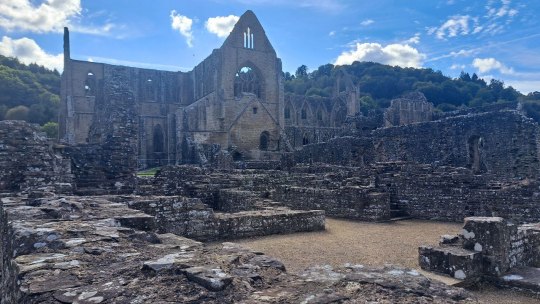
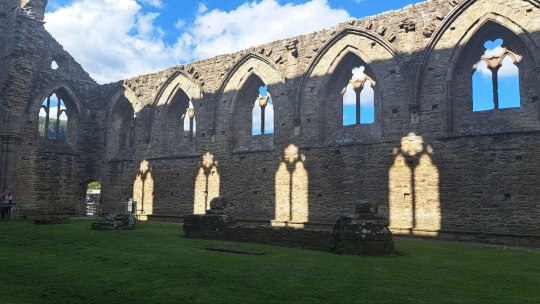

The enormous ruins of Tintern Abbey in Monmouthshire in Wales (Cymru). These are the remains of various stages of construction between 1131 and 1536. It only fell into disrepair after the dissolution of the Monasteries under Henry VIII.
#dark academia#light academia#classical#academia aesthetic#escapism#academia#books and libraries#classic literature#books#architecture#place#travel#photography#Tintern Abbey#Monmouthshire#Wales#Cymru#ruins#despair#history#historical#royal core#cottage core#aesthetics#academic#artistic#mood#vibe
351 notes
·
View notes
Text
Okay, so on this post I'll be sharing some of the interesting tidbits of info I'm finding about the actual ARG location and history. It'll be continuously edited as to prevent spam + to keep my thoughts in one place. Also this is mostly Wikipedia since I'm not going for 100% accuracy, just an overview that might give hints to whatever is going on.
Info and potential spoilers below the cut <3
Shugborough Hall (the estate + grounds the Shepherd's Monument + inscription are on):
Owned by the Bishops of Lichfield until the dissolution of the monasteries in ~1540 (when Henry VIII disbanded a bunch of Catholic institutions like monasteries, convents, etc in England, Ireland, and Wales)
I don't know how relevant it is, but that's the origin(?) of the location/estate itself
*************************
Shepherd's Monument (still working on this)
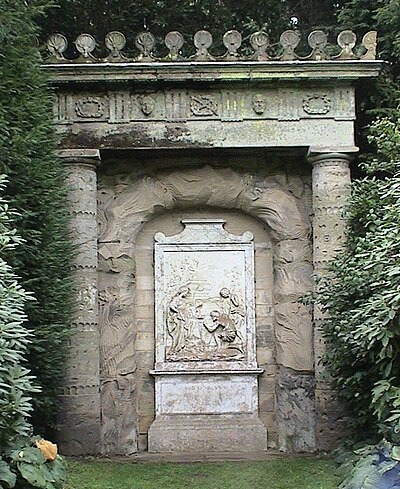
Commissioned by Thomas Anson (member of British Parliament at the time) and constructed sometime between 1748 and 1756.
***********************
Shugborough Inscription (the actual Thing)
The Shugborough Inscription is a cipher (in this case, a sequence of letters) carved into the Shepherd's Monument. It was carved below a stone relief recreation of Nicolas Poussin's painting "Et in Arcadia ego" (by Flemish sculptor Peter Sheemakers; see below), and has remained unsolved nor satisfactorily explained since its creation.

There are many theories about the inscription and what it could mean, including a connection between the monument and the Holy Grail 👀.

The inscription is made up of 2 rows of letters:
O U O S V A V V
D M (frames the row above)
So, it seems like it's not D O U O S V A V V(?), but rather O U O S V A V V, D M
!!!!!! D. M. was commonly used on Roman tombs + stands for Dis Manibus, meaning "dedicated to the shades." !!!!!!!! and I think this is very cool c:
************************
Et in Arcadia ego (Nicolas Poussin, c. 1637-1638)

Also known as Shepherds of Arcadia, this painting features an idyllic, pastoral (shepherd's lifestyle) scene, in which a woman and a group of shepherds stand gathered around a tomb with the Latin inscription "Et in Arcadia ego" ("Even in Arcadia, there I am"; "I too was in Arcadia")
Arcadia
(Will add to this one a little later)
#Sorry this is gonna be messy for a while#watch i finish this and everyone already got the email issue worked out looooooooool#it's kinda neat anyways and I love latching onto a thread of info when I really should be working on something else#...which I should right now#Oh fucking well#sleep token
59 notes
·
View notes